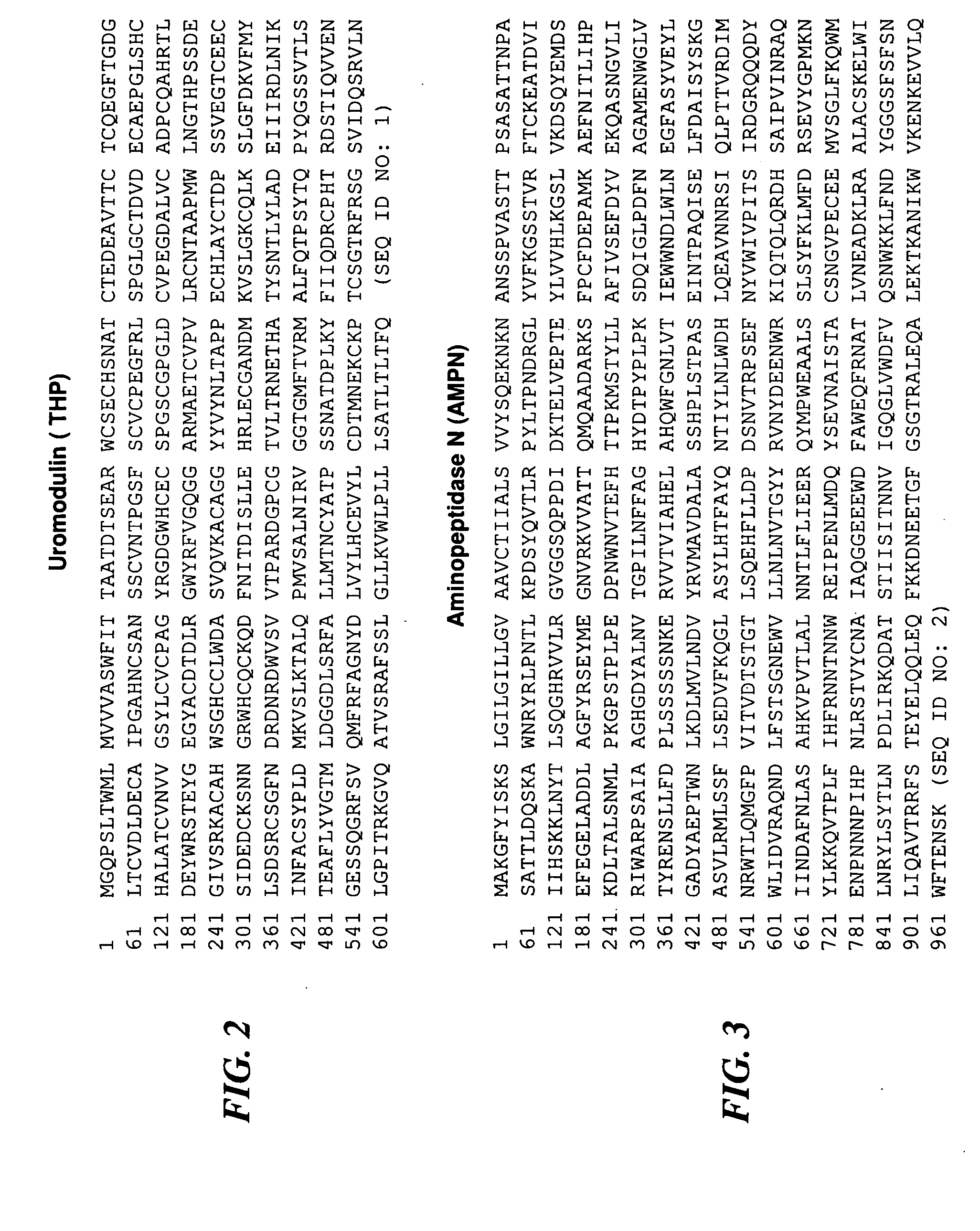Methods for diagnosis of chronic prostatitis/chronic pelvic pain syndrome
a chronic prostatitis and pelvis syndrome technology, applied in the field of chronic prostatitis/chronic pain syndrome diagnosis, can solve the problem that the definition of the diagnosis and treatment of cp/cpps remains elusiv
- Summary
- Abstract
- Description
- Claims
- Application Information
AI Technical Summary
Benefits of technology
Problems solved by technology
Method used
Image
Examples
example 1
Identification of Biomarkers for CP / CPPS in Post-Prostatic Massage Urine
[0207]Chronic prostatitis / chronic pelvic pain syndrome (CP / CPPS)—a symptom complex of unknown etiology manifested by pain or discomfort in the pelvic region for at least 3 months in the previous 6 months. CP / CPPS is a frustrating clinical syndrome that lacks pathognomonic biomarkers. The objective of the present study was to examine the pre- and post-prostatic massage (pre-M and post-M) urine of CP / CPPS patients and controls to discover potential diagnostic biomarkers for CP / CPPS.
[0208]Thirty CP / CPPS patients and 30 healthy asymptomatic age-matched controls were enrolled in the study. Inclusion and exclusion criteria were those recommended by the Chronic Prostatitis Collaborative Research Network (CPCRN). Controls were defined as healthy asymptomatic men drawn from the general population with an NIH-CPSI score of zero, a PSA level of less than 2.5 ng / mL and a negative digital rectal exam for prostate cancer. The...
example 2
Diagnostic Test Strips-Design 1
[0211]The levels of biomarker proteins described herein can be determined using test strips as illustrated in FIG. 10-13. In the test strip, the membrane is divided into three separate regions: a sample (S) position at one end of the membrane, a test (T) position located at the middle of the membrane, and a control (C) position found at the opposite end the membrane (FIG. 10A). Located at S is a defined quantity of dehydrated anti-biomarker protein antibody. The antibody can be conjugated to colloidal gold beads or colored latex beads for visualization purposes. At T, there is a defined quantity of biomarker protein immobilized on the membrane. At C, there is another immobilized protein, an antibody immunoreactive to the anti-biomarker protein antibody located at the S position (FIG. 10).
[0212]The defined quantity of dehydrated anti-protein antibody at S position is such that there is just enough antibody to bind the biomarker protein from the sample (...
example 3
Test Strips-Design 2
[0220]An alternative version of the test strips for determining the level of biomarker protein level is illustrated in FIG. 14. Here the membrane strip contains two different anti-biomarker antibodies specific for the same biomarker, each antibody binds the biomarker at a different epitope. The first antibody is labeled (e. g. colored latex beads), disposed on the solid support membrane but is not immobilized on it, (i. e. the antibody is mobile), and is disposed in excess at the S position. The second anti-biomarker antibody is not labeled but is immobilized and is in excess at position T. This second anti-biomarker protein antibody binds an epitope on the biomarker that is not affected by the binding of the first antibody. At position C, there is an excess of non-labeled antibody against the anti-biomarker antibody at the S position. The antibody at C serves to capture any free labeled anti-biomarker antibody migrating from S. When sufficient free labeled anti-...
PUM
| Property | Measurement | Unit |
|---|---|---|
| size | aaaaa | aaaaa |
| size | aaaaa | aaaaa |
| temperature | aaaaa | aaaaa |
Abstract
Description
Claims
Application Information
 Login to View More
Login to View More - R&D
- Intellectual Property
- Life Sciences
- Materials
- Tech Scout
- Unparalleled Data Quality
- Higher Quality Content
- 60% Fewer Hallucinations
Browse by: Latest US Patents, China's latest patents, Technical Efficacy Thesaurus, Application Domain, Technology Topic, Popular Technical Reports.
© 2025 PatSnap. All rights reserved.Legal|Privacy policy|Modern Slavery Act Transparency Statement|Sitemap|About US| Contact US: help@patsnap.com



